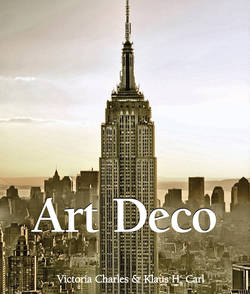Читать книгу Art Deco - Victoria Charles - Страница 3
На сайте Литреса книга снята с продажи.
Architecture, Painted and Sculpted Decor
ОглавлениеEdgar Brandt, Oasis, folding screen (detail), c. 1924.
Iron and copper. Private collection, Paris.
All exhibitions comprised of new construction greatly credited the efforts of the architects: well-adapted to the requirements for its brief, more or less accessible and expressive, and leaving visitors with a sincere and lasting first impression. Even more so, in an exhibition devoted to decorative and industrial modern arts, architecture required the most attentive care and excited great interest. Indeed, the most utilitarian of all arts is also the most “decorative” and the most closely related to industrial progress.
Decorative art is as such based on the great number of its creations. Large silhouettes of buildings are more important in the scenery of life than all other objects with which we can adorn it. Sculpture and painting can only add a little to the beauty of their already thick volumes, and will not be able to enrich their legacy, should they not have their own intrinsic nobility. As for the alliance of art with industry, architects did not wait to conclude it, the eloquent manifestos which, for almost a century, have proclaimed the need of it. Continuously in search of new materials, effective and economic construction processes, they benefit from the discoveries of science and sometimes even cause them. Lastly, having to create a framework where everything that further embellishes the pavilion finds its place and makes sense, architecture coordinates the efforts of the other arts. It should, therefore, be a source of inspiration. However, it ultimately becomes a slave to the whole, a mere shell from which a unity of expression must originate in order to create the style of its time or, more simply, the harmony of the pavilion itself.
